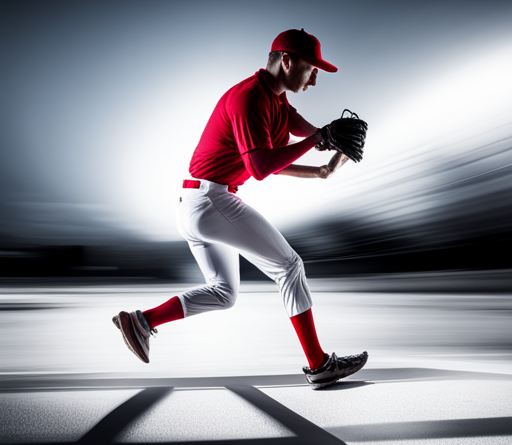Preventing Pitcher’s Elbow: The Ultimate Guide for Baseball Players in Freehold
In the world of sports, baseball has a special place. It’s more than a game; it’s a beloved pastime that brings communities together. For players, the sport demands agility, cardio endurance, and a significant amount of stress on the joints, especially the elbow, for pitchers. In Freehold, where baseball is a part of the local culture, it’s vital for players to understand how to prevent and manage injuries that can occur, particularly the dreaded “pitcher’s elbow.”
We’ll walk you through the best practices, exercises, and expert tips to keep your elbows healthy and your game at its peak. If you’re a pitcher, a coach, or an enthusiastic supporter of the game, this comprehensive guide is tailored for you. We’ll cover everything from understanding the causes of baseball elbow injuries freehold to ways to prevent them. Whether you’re a little leaguer or a seasoned veteran, it’s never too early or too late to prioritize your elbow health.
Understanding the Anatomy of Pitcher’s Elbow
Pitcher’s elbow is an umbrella term for the variety of injuries that can affect the inner elbow of a baseball player. Some common conditions include medial epicondylitis, also known as golfer’s elbow, ulnar collateral ligament (UCL) tears, and flexor-pronator tendonitis. These injuries often result from the repetitive stress placed on the elbow during the pitching motion. Understanding the specific anatomy involved helps to grasp the importance of injury prevention.
The Role of the UCL
The UCL is a complex of three structures that run on the inside of the elbow and provide stability during the throwing motion. When the UCL is sprained or torn, it can significantly impact a pitcher’s ability to play.
Implications for Flexor Tendons
The flexor-pronator mass is a group of muscles that originate from the medial epicondyle and help with elbow flexion and forearm rotation. Overuse can lead to tendonitis in these flexor tendons, causing pain and reduced performance.
The Threat of Medial Epicondylitis
Medial epicondylitis is an overuse injury that affects the tendons on the inside of the elbow. Commonly known as golfer’s elbow, this condition can be particularly painful and debilitating for a baseball pitcher.
Common Causes of Pitcher’s Elbow
The throwing motion is a complex and demanding sequence that involves the entire body. The following are some common causes that can lead to pitcher’s elbow injuries:
Poor Throwing Mechanics
If a pitcher’s throwing mechanics are flawed, they can create undue stress on the elbow. This might include an improper arm slot, not fully using the lower body, or not following through properly.
Overuse
Pitchers who throw too often or with too much intensity without allowing proper rest increase the risk of developing elbow injuries.
Incorrect Warm-up and Cooldown
Neglecting a thorough warm-up and cooldown routine before and after throwing can lead to muscle tightness and increased susceptibility to injury.
Inadequate Strength or Conditioning
Muscles that support the elbow need to be strong and well-conditioned to withstand the forces involved in throwing. Failure to maintain adequate strength can lead to injury.
Preventing Baseball Elbow Injuries
Prevention is key to maintaining a healthy pitching elbow. Here are some strategies and exercises that can help reduce your risk of injury:
Proper Mechanics
Work with a coach to refine your throwing mechanics, ensuring that you’re not placing unnecessary strain on your elbow.
Controlled Pitch Counts
Limit the number of pitches thrown in a game and during practices. Follow guidelines based on your age and experience level to avoid overuse.
Strength and Conditioning
Incorporate a regular strength and conditioning program for your entire body, with a focus on exercises that strengthen the shoulder, core, and legs. Strong, supportive muscles can reduce the load on the elbow.
Flexibility
Engage in regular stretching to maintain optimal flexibility in the muscles and tendons of the elbow and forearm.
Rest
Allow your body and especially your elbow adequate time to rest and recover between pitching sessions.
Performance Fueling
Eating a healthy, well-balanced diet can directly impact your performance and recovery. Hydration and proper nutrient intake are essential.
Identifying Early Warning Signs
It’s crucial to recognize the early signs of an elbow injury to prevent it from worsening. The following are potential signs that you may have a developing elbow problem:
Persistent Pain
Any lingering discomfort in the elbow during or after pitching should not be ignored.
Loss of Range of Motion
If you notice that your elbow has decreased flexibility, it could be an indicator of an injury.
Weakening Grip Strength
A noticeable decrease in your ability to grip objects could indicate an issue with the muscles or tendons in your elbow.
Seeking Treatment for Pitcher’s Elbow
If you suspect that you’re suffering from a throwing-related injury, it’s essential to seek treatment promptly:
Consulting a Specialist
Visit an orthopedic specialist or physical therapist who has experience treating baseball-related elbow injuries.
Diagnostic Imaging
Your healthcare provider might order X-rays, MRIs, or ultrasounds to diagnose the extent of the injury.
Treatment Options
Depending on the diagnosis, you might be prescribed rest, physical therapy, or in severe cases, surgery to repair the damaged tissues.
Rehabilitation
Rehabilitation is often a critical phase of recovery, focused on restoring strength, flexibility, and functional use of the elbow.
The Role of Physical Therapy in Recovery
Physical therapy can play a vital role in the recovery process for a baseball elbow injury:
Therapeutic Exercise
Your therapist will create a custom exercise plan to strengthen and rehabilitate the elbow.
Manual Therapy
Hands-on techniques can help reduce pain and improve the flexibility of the injured tissues.
Modalities
Modalities such as ultrasound or electrical stimulation might be used to promote healing and reduce inflammation.
Return to Play
Your therapist will guide you through a gradual return to throwing, ensuring that you progress at a safe and appropriate pace.
Psychological Impact of an Elbow Injury
In addition to the physical challenges of recovery, an elbow injury can have a significant psychological impact on a baseball player:
Coping Strategies
Explore coping strategies to manage the frustration and disappointment that often accompany an injury.
Setting Realistic Goals
Work with your support team to set realistic and achievable goals for your recovery.
Mental Conditioning
Use this time to focus on the mental aspects of your game, such as visualization and positive self-talk.
Elbow Injury Prevention Tips for Coaches
Coaches play a critical role in injury prevention for their players. Here are some tips for coaches to reduce the risk of pitcher’s elbow:
Educate Your Players
Make sure your players understand the importance of proper warm-up, cooldown, and throwing techniques.
Monitor Pitch Counts
Keep track of the number of pitches each player throws and enforce appropriate rest periods.
Encourage Communication
Create an open environment where players feel comfortable reporting any pain or discomfort they experience.
Work with a Team
Collaborate with a sports medicine team to develop comprehensive injury prevention strategies for your team.
Conclusion
Pitching is an art, but more importantly, it’s a science. To excel in the game of baseball, one must not only hone skills but also safeguard against the risks that can potentially end a career. With Freehold’s rich baseball tradition, it’s imperative to take proactive measures to protect your most valuable asset – your throwing arm. By following the guidelines presented in this comprehensive guide, you can enjoy the game for years to come with a healthy and robust elbow.
Remember, prevention is always better than cure. But if you do find yourself facing a pitcher’s elbow injury, do not lose heart. With the right treatment, rehabilitation, and attitude, you can overcome this challenge and get back on the mound.
Take control of your elbow health, stay informed, and never underestimate the power of preparation in keeping yourself in the game. Whether you’re a future prospect, seasoned veteran, or a coach, share this guide with your fellow players to ensure that the legacy of baseball elbow injuries Woodbridge continues to thrive, one healthy elbow at a time.


